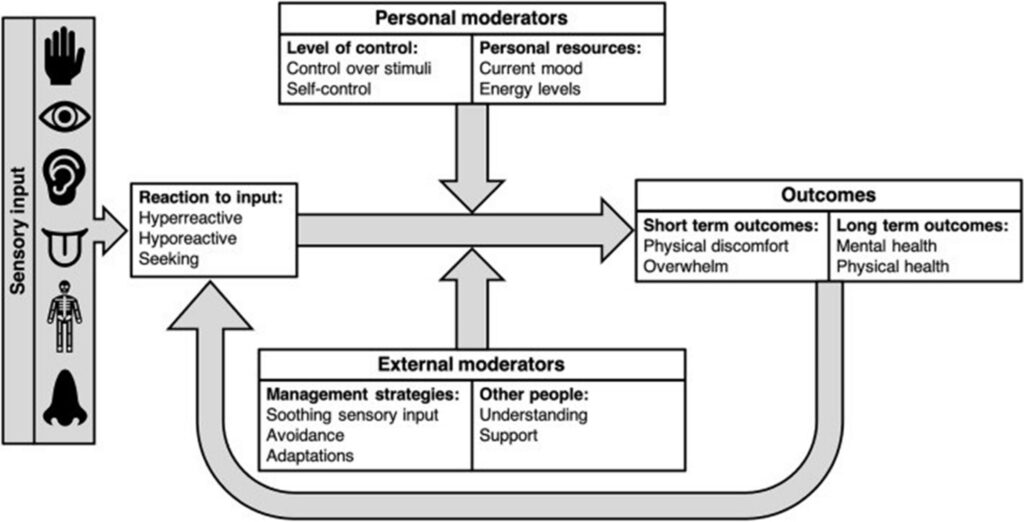
Teresa Tavassoli, Associate Professor of Psychology, reveals how sensory differences in autistic individuals can impact anxiety levels.
We all perceive the world around us differently. Some individuals may be sensory hyperreactive, becoming overwhelmed by everyday sounds. Others may be sensory hyporeactive, not noticing the environment around them – for example, having a reduced sensitivity to pain. And others might be sensory seeking, enjoying activities like watching spinning objects.
Many autistic individuals have these sensory reactivity differences, and these experiences can be complex. Our research has shown that over 90% of autistic adults reported being sensory hyperreactive, around 30 % reported being sensory hyporeactive and around 40% reported being sensory seeking. About 20% of autistic adults experienced all three types of sensory reactivity differences, underscoring just how multifaceted these sensory experiences can be.
Moreover, these reactivity differences can be complex even within a single sense. Let’s take “touch” as an example – some autistic adults may seek the feeling of pressure from tighter clothes while simultaneously being hyperreactive to light touch, such as a tap on the shoulder.
Sensory reactivity in autism has been linked to various aspects of life, including sleep difficulties and mental health issues, particularly anxiety. Experts have proposed three possible theoretical models to explain the link, specifically focusing on hyperreactivity: firstly, that anxiety could lead to sensory hyperreactivity; secondly, that sensory hyperreactivity could lead to anxiety; or thirdly, that another factor associated with both could explain the connection.
Our own MQ and Autistica-funded research has further explored the link between sensory reactivity and anxiety in autistic adults, investigating which tends to come first. Is it sensory reactivity causing anxiety, or the other way around?
In one study, autistic adults reported experiences that suggested a link between smell and anxiety:
“When we had issues with our sewage system that persisted for a couple of weeks the constant smell made me agitated and anxious…”
Based on this research, we developed a theoretical model linking sensory reactivity and mental health challenges such as anxiety (see Figure below). This model identifies other important factors, including the amount of control someone feels they have over a situation. Our research also showed that intolerance of uncertainty – how much control and predictability someone needed – moderates the relationship between sensory reactivity and anxiety.

In another study involving 246 autistic adults aged 18-76, participants filled out self-report assessments on sensory reactivity differences and anxiety. Statistical analysis concluded that there is a link between them. Interestingly, autistic adults reported that sensory hyperreactivity precedes anxiety, while sensory seeking was more a response to anxiety.
This insight could prove crucial when developing effective interventions for anxiety in autism – addressing sensory needs could be a key component in helping autistic individuals manage anxiety more effectively. The more we understand the connections between sensory reactivity and autism, the better equipped we will be to create supportive environments and effective approaches to mental health support for autistic individuals.
Photo by Uday Mittal on Unsplash

